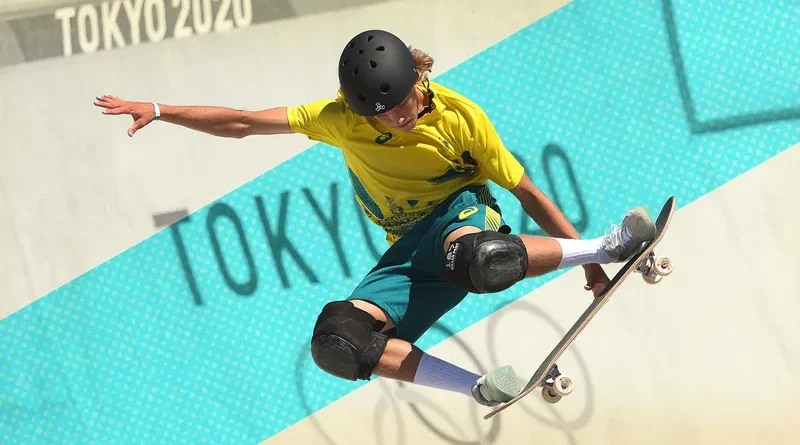Training for Success: Unlocking Your Full Athletic Potential
Whether you’re an amateur athlete looking to improve your performance or an aspiring professional hoping to reach the pinnacle of your sport, unlocking your full athletic potential requires more than just raw talent. It takes a well-rounded approach that encompasses physical training, mental conditioning, and lifestyle management. The journey toward success as an athlete is not just about competing; it’s about continuously improving your skills, maintaining peak physical fitness, recovering efficiently, and preparing mentally for the challenges ahead.
In this article, we will delve into the key factors that contribute to unlocking your full athletic potential. From structured training programs and recovery techniques to nutritional strategies and the importance of mindset, this guide aims to provide a comprehensive blueprint for achieving your goals and becoming the best athlete you can be.
1. Understanding Your Body: The Foundation of Training
The Science of Physical Performance
To unlock your athletic potential, it’s essential to understand how the body performs during physical activity. Every sport places different demands on the body, but some general principles apply to all athletes. The body is composed of muscles, bones, ligaments, and joints, each playing a role in producing movement, generating force, and maintaining balance.
Training your body involves enhancing its ability to generate power, increase endurance, improve flexibility, and recover quickly. These physical attributes are built through a combination of strength training, cardiovascular conditioning, flexibility exercises, and sport-specific drills.
The Importance of Periodization
Periodization is the strategic planning of your training to ensure optimal performance at the right time. It involves organizing your training into distinct cycles (macrocycle, mesocycle, and microcycle) with specific goals in mind. This process allows you to balance periods of intense training with times for recovery and rest, reducing the risk of burnout or injury. For example:
- Macrocycle: This is the long-term training plan, often lasting a year, that outlines your general athletic goals.
- Mesocycle: This is the medium-term plan that focuses on specific aspects of training (e.g., strength or endurance) over a few weeks or months.
- Microcycle: The short-term cycle, typically lasting a week, that details the specific workouts you’ll do, such as strength training, speed work, or recovery exercises.
By following a periodized training plan, athletes can ensure they peak at the right moment and avoid overtraining.
2. The Pillars of Athletic Training
Strength Training: Building the Power Base
Strength training is foundational for any athlete. Whether you’re a runner, a football player, or a swimmer, developing strength improves your performance and reduces the risk of injury. Athletes must focus on both compound movements (which work multiple muscle groups) and isolated exercises (which target specific muscles) to develop strength, stability, and explosive power.
Key components of strength training include:
- Resistance training: Using weights, resistance bands, or bodyweight exercises to increase muscle strength.
- Core training: Strengthening the muscles of the abdomen, back, and pelvis to enhance stability and posture.
- Plyometrics: Exercises that involve explosive movements to improve power, such as jump squats or box jumps.
Athletes should aim for a combination of low-rep, high-weight exercises to build strength and high-rep, low-weight exercises to improve endurance in their muscles.
Cardiovascular Training: Building Endurance and Stamina
Cardiovascular training is essential for improving aerobic capacity, which is critical for endurance in sports. Whether you’re sprinting, swimming, or cycling, improving your cardiovascular fitness enables you to maintain peak performance for longer periods.
Types of cardiovascular training include:
- Long-distance runs or cycling: Focuses on building stamina by training the heart and lungs to sustain low to moderate-intensity exercise over extended periods.
- Interval training: Alternating between short bursts of intense activity and periods of lower intensity or rest. This form of training improves both aerobic and anaerobic capacity and is beneficial for sports requiring bursts of speed, like football or soccer.
- HIIT (High-Intensity Interval Training): A variation of interval training that incorporates very short bursts of maximal effort followed by rest or low-intensity exercise. HIIT has been shown to be effective in improving both cardiovascular fitness and fat loss.
Athletes should tailor their cardiovascular training to the energy systems used in their specific sport. For example, sprinters may benefit more from short, intense intervals, while marathon runners will focus on long, steady-state cardio.
Flexibility and Mobility: Preventing Injury
Mobility and flexibility are often overlooked in an athlete’s training plan but are crucial for injury prevention and performance enhancement. Flexibility allows muscles and joints to move through their full range of motion, which improves efficiency and reduces the risk of strain. Mobility refers to the ability of joints to move freely and without discomfort, enabling athletes to perform complex movements required in their sport.
To increase flexibility and mobility, athletes can incorporate:
- Dynamic stretching: Performing active movements that stretch muscles during warm-ups. This is especially important before intense physical activity.
- Static stretching: Holding stretches for extended periods to increase flexibility, best performed after exercise when muscles are warm.
- Foam rolling and myofascial release: Self-massage techniques that help alleviate tightness and improve range of motion.
Sport-Specific Drills: Sharpening Skills
While general fitness training is essential, sport-specific skills are the key to becoming a successful athlete. Practicing drills that mimic the movements of your sport will help improve technique, speed, and accuracy.
For example:
- A soccer player may focus on dribbling, passing, shooting, and agility drills.
- A basketball player may work on shooting form, ball handling, and defensive footwork.
- A sprinter will prioritize explosive starts, acceleration, and top-speed running mechanics.
The goal is to practice movements and skills that directly translate to success in competition.
3. The Role of Recovery: Rest, Nutrition, and Mental Health
Rest and Recovery
Physical training is only effective when coupled with proper recovery. Overtraining without adequate rest can lead to fatigue, decreased performance, and even injury. Recovery includes not only rest but also active recovery strategies to help muscles repair and grow.
Techniques for recovery include:
- Sleep: Sleep is when the body repairs itself. Adequate sleep (7-9 hours per night) is essential for optimal performance and recovery.
- Active rest: Low-intensity activities like walking, light swimming, or yoga can help maintain blood circulation and speed up recovery without overloading the body.
- Massage and cryotherapy: Professional massages, ice baths, and cryotherapy can help reduce muscle soreness and inflammation after intense training.
Nutrition: Fueling Your Body for Success
Nutrition plays a pivotal role in unlocking an athlete’s potential. A well-balanced diet ensures the body has the right amount of energy, vitamins, minerals, and protein needed for peak performance, recovery, and muscle growth.
Key nutritional strategies for athletes include:
- Carbohydrates: Essential for energy, carbohydrates should be consumed before and after workouts to replenish glycogen stores. Whole grains, fruits, and vegetables are excellent sources of complex carbohydrates.
- Protein: Vital for muscle repair and growth, protein should be consumed after workouts to aid recovery. Sources include lean meats, fish, eggs, dairy, and plant-based options like lentils and tofu.
- Fats: Healthy fats, such as those found in avocados, nuts, seeds, and olive oil, help maintain hormone production and support overall health.
- Hydration: Staying hydrated is crucial for performance, as even mild dehydration can negatively affect strength, endurance, and focus. Drink water consistently throughout the day, and consider electrolyte drinks during long or intense training sessions.
Mental Health and Mindset
An often-overlooked aspect of training for success is mental conditioning. Athletes with a positive, resilient mindset tend to perform better and overcome challenges more effectively. Mental toughness, focus, and motivation can be cultivated through practices like:
- Visualization: Mentally rehearsing movements, game strategies, or performance scenarios can boost confidence and help with focus.
- Goal setting: Setting short-term and long-term goals helps athletes stay motivated and on track toward improving their performance.
- Mindfulness and stress management: Practices like meditation, deep breathing, and mindfulness can help athletes manage stress and maintain a clear head during high-pressure situations.
A strong mental game is just as important as physical fitness when it comes to unlocking athletic potential.
4. Conclusion
Unlocking your full athletic potential requires a multifaceted approach that combines rigorous physical training, effective recovery strategies, proper nutrition, and mental conditioning. It’s not just about working harder but working smarter and optimizing all aspects of your training. By following a structured plan, staying consistent, and focusing on improvement in all areas, you can push past limitations, stay injury-free, and reach new heights in your sport.
Remember, athletic success is a journey that takes time, perseverance, and dedication. Stay focused, listen to your body, and always strive to be better than you were yesterday. With the right mindset and approach, there are no limits to what you can achieve.

